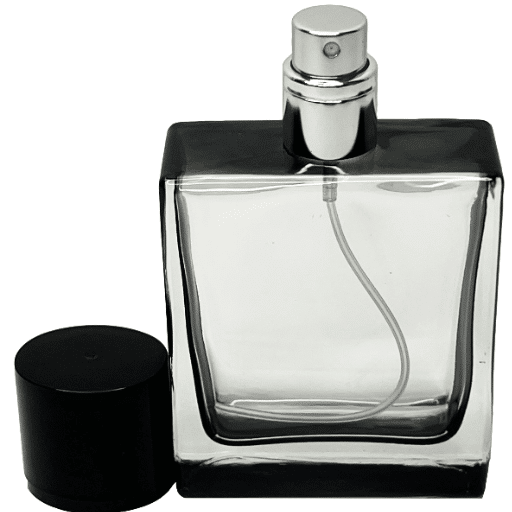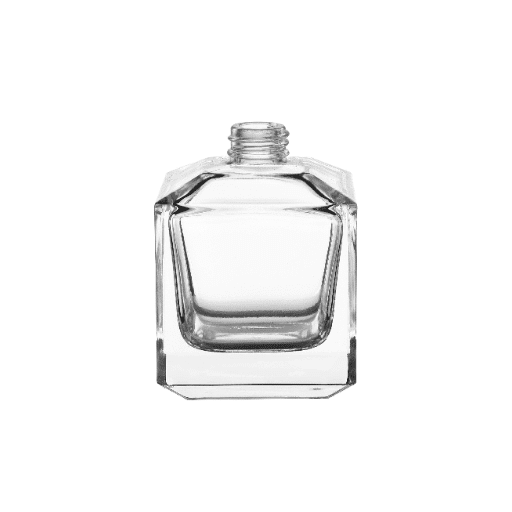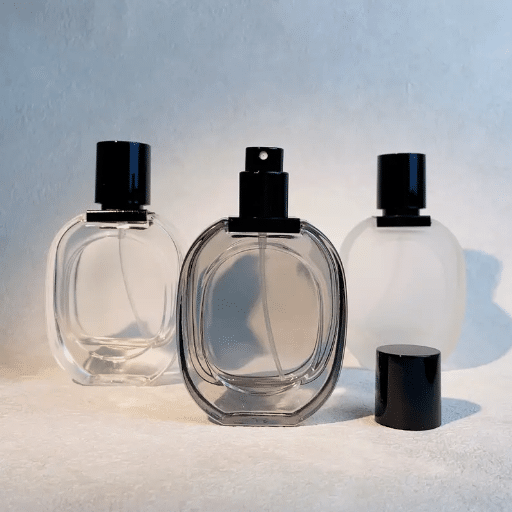Perfume bottle design is a captivating fusion of artistry, functionality, and branding. This post explores the intricate processes and creative inspirations behind these exquisite vessels, demonstrating how they extend far beyond mere containers for fragrance. From historical influences that have shaped iconic designs to the advanced techniques utilized in contemporary production, this article provides an in-depth look at the evolution and innovation of perfume bottle craftsmanship. Whether you’re an enthusiast of design, a collector, or simply curious about the untold stories behind your favorite fragrances, this visual and informative guide will illuminate the fascinating world of perfume bottle artistry.
What Makes a Perfume Bottle Unique?
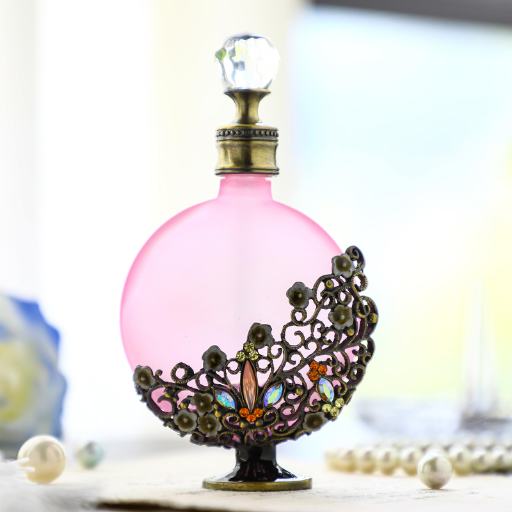
Perfume bottles are unique due to their ability to merge aesthetic design with functional utility. The choice of materials, including glass, crystal, or metal, plays a critical role in preserving the perfume’s chemical composition while offering a luxurious tactile experience. Additionally, intricate craftsmanship, such as hand-engraving or sculptural shapes, elevates these bottles into art forms. The design itself often reflects the brand’s identity or the fragrance’s essence, creating a distinctive visual and emotional connection with the consumer.
Exploring Designer Perfume Bottles
Designer perfume bottles are meticulously crafted to balance form and function while creating an emotional connection with the consumer. The materials used in these bottles, such as high-quality glass or crystal, are chosen to preserve the fragrance’s integrity by preventing light and air exposure, which can degrade the perfume over time. The aesthetic design often reflects the brand’s identity, with sculptural shapes, hand-engraved details, and unique color schemes acting as visual representations of the fragrance’s concept. These bottles are frequently produced in collaboration with renowned artists and designers, turning them into collectible art pieces.
The interplay of functionality and luxury is evident in features like airtight seals and ergonomic shapes, which enhance usability without compromising on elegance. Limited editions, characterized by exquisite detailing and rare materials, further emphasize exclusivity and desirability. Ultimately, designer perfume bottles serve not just as a protective vessel for the fragrance but as an extension of the brand’s story and the wearer’s identity, leaving an enduring impression on both visual and emotional levels.
The Role of Bottle Design in Fragrance Experience
Bottle design significantly influences the overall fragrance experience by combining aesthetics, functionality, and branding to create a lasting impression on consumers. The interplay of these elements ensures that the bottle not only protects the fragrance but also enhances the sensory and emotional connection with the product.
- Material Selection
-
-
- Glass: Preferred for its durability and ability to preserve the integrity of the fragrance. It is non-reactive with perfume contents and can be easily molded into intricate shapes.
- Acrylic or Plastic: Occasionally used in lightweight or travel-friendly designs. Advances in polymer technology ensure these materials maintain a high-quality finish while keeping production costs lower.
-
- Dispenser Mechanisms
-
-
- Spray Pump: Standard for ensuring an even and controlled distribution of the fragrance, with components designed for fine mist atomization.
- Rollerball: Suitable for minimal and precise application, often featured in compact or portable formats.
- Dropper Systems: Utilized mostly in niche or luxury products, favoring controlled, manual dosage for intimate, hands-on use.
-
- Airtight Sealing Systems
-
-
- Importance of seals lies in preventing external air or contaminants from degrading the perfume. Common techniques include precisely fitted caps made of metal or high-density plastic combined with sealing rings for superior airtightness.
-
- Ergonomics and Usability
-
-
- Bottle shapes are carefully tested for user comfort during handling and application. This involves balancing weight distribution and optimizing grip to prevent slippage, particularly for larger bottles.
-
- Technical Parameters
-
-
- Thickness of Glass Walls: Typically 3-10 mm, ensuring sufficient resilience while achieving an elegant appearance.
- Spray Pump Output: Average discharge volume is approximately 0.08-0.15 mL per actuation, catering to standard usage preferences.
- Net Volume: Common sizes range from 30 mL to 100 mL, providing variety to address consumer needs for portability or extended use.
-
By addressing these aspects, bottle design not only serves as a practical vessel for the fragrance but also as a multi-sensory and emotional experience, reflecting and amplifying the brand’s essence.
How Luxury Perfume Brands Innovate in Bottle Design
Luxury perfume brands innovate in bottle design by combining cutting-edge technology, artistic craftsmanship, and practical functionality. Key innovations often include advanced material usage, ergonomic features, and aesthetic creativity that align with the brand’s identity. Notable approaches and corresponding technical parameters include:
- Material Innovation: Bottles crafted from high-grade glass or eco-friendly alternatives (e.g., recycled glass or bioplastics) ensure durability and sustainability. Typical material thickness ranges between 3-8 mm for premium quality and structural integrity.
- Precision in Dispensing Mechanisms: Pump mechanisms incorporate high-tolerance components to provide consistent spray patterns with precision. Discharge volume remains tightly controlled, often in the range of 0.08-0.15 mL per actuation.
- Custom Engravings and Embellishments: Laser-engraved branding, intricate patterns, or metal accents, achieved with precision tolerances of ±0.1 mm, add unique visual appeal while maintaining design symmetry.
- Ergonomics and User Experience: Bottles are designed for easy handling, with surface finishes (e.g., matte, polished, or textured) having a coefficient of friction optimized for grip, generally between 0.3-0.5.
Through these technical and artistic advancements, luxury perfume bottles transcend their utilitarian purpose, becoming iconic representations of style and sophistication.
How to Choose the Right Perfume Bottle?
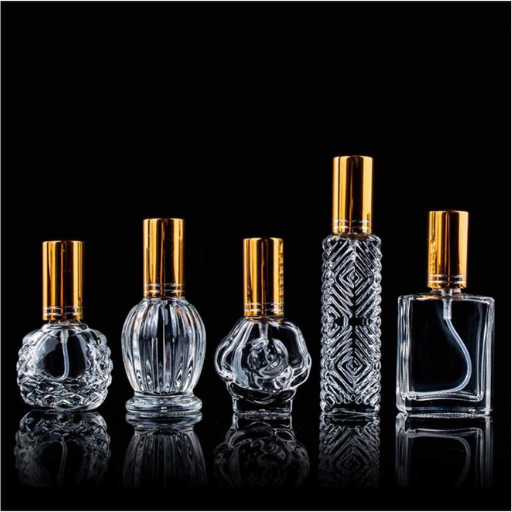
While selecting a perfume, it is important to consider the following characteristics in a perfume bottle:
Material and Durability: Glass and reinforced plastics are good options because they are exposed to dim and durable materials which causes good longevity of the fragrance and its protection from textures such as air or light.
Capacity: Smaller bottles can be good for travel while larger ones can be better for normal use due to regular refills.
Design and Aesthetics: Brand logo can be forward facing or backward facing which can be personalized with a specific text of choice. Consider features in the packaging like the shape, color, and decorative details to increase visual appeal.
Functionality: Sprays and droppers can be used to apply fragrances but ease of use is still an important consideration when selecting the application tool.
Environmental Impact: Bottles that are made of used materials or recyclable products are best to protect the environment.
In combination with each other, these elements can assist in creating a wearable perfume bottle which balances style and elegance.
Understanding Bottle Size: 30ml, 50ml, 100ml, and Beyond
When it comes to understanding bottle sizes like 30ml, 50ml, 100ml, and beyond, it really depends on usage patterns and preferences. A 30ml bottle is ideal for trying out a new scent or for travel, as it’s compact and portable. A 50ml bottle strikes a balance between portability and longevity, making it perfect for daily use without being too bulky. Finally, a 100ml or larger bottle is great for those who have a signature fragrance they use consistently, as it provides more value per milliliter. The choice ultimately comes down to how often you’ll use the fragrance and whether you prefer variety over committing to a single scent.
The Importance of Glass Bottle Material and Cap Design
Understanding measurements such as 30ml, 50ml, and 100ml entails usage patterns and preferences. For example, a 30ml bottle is compact, allowing one to try out a new scent or travel. A 50ml bottle, on the other hand, does not strike too much balance; shifting towards a bulky size, however, at this range, it serves a better value for daily purposes. Lastly, those who have consistent signature fragrances they use would prefer a 100ml or larger bottle, as these also provide more value per milliliter poured. Ultimately, the decision comes down to how often one would like to use the perfume and if they prefer variety or commitment to a single scent.
Similarly, cap design is critical for maintaining an airtight seal, which prevents the evaporation or oxidation of the liquid inside. Caps with precise threading and integrated sealants, such as silicone or rubber O-rings, provide optimal leak resistance. Some high-end bottles feature screw caps with anodized aluminum or high-density polyethylene (HDPE) plastic liners for additional chemical resistance. For spray or pump mechanisms, stainless steel components or medical-grade polymers are recommended to ensure long-term functionality and resistance to corrosion, even when exposed to alcohol-based formulations commonly found in fragrances.
By carefully selecting high-quality materials for both the glass bottle and the cap, manufacturers can enhance product stability, highlight premium presentation, and maintain user satisfaction throughout the product lifecycle.
Refillable vs. Non-Refillable: Which Perfume Bottle is Best?
|
Key Point |
Refillable Bottles |
Non-Refillable Bottles |
|---|---|---|
|
Environmental Impact |
Eco-friendly, reduces waste |
Single-use, generates more waste |
|
Cost Over Time |
Lower with refills |
Higher due to single-use bottles |
|
Material Durability |
High-quality, reusable materials |
Often simpler, disposable designs |
|
Convenience |
Requires refilling effort |
Easy to use, no refilling needed |
|
Customization Options |
Allows for personalized refills |
Limited to predefined compositions |
|
Product Longevity |
Long-lasting if properly maintained |
Limited to initial use duration |
|
Initial Purchase Cost |
Higher upfront investment |
Lower initial cost |
|
Availability |
Fewer refill stations globally |
Widely available everywhere |
|
Brand Perception |
Seen as sustainable and premium |
Conventional and widely accepted |
|
Hygiene Considerations |
Requires regular cleaning |
Fully sealed, no maintenance needed |
What Are the Latest Trends in Perfume Bottle Designs?
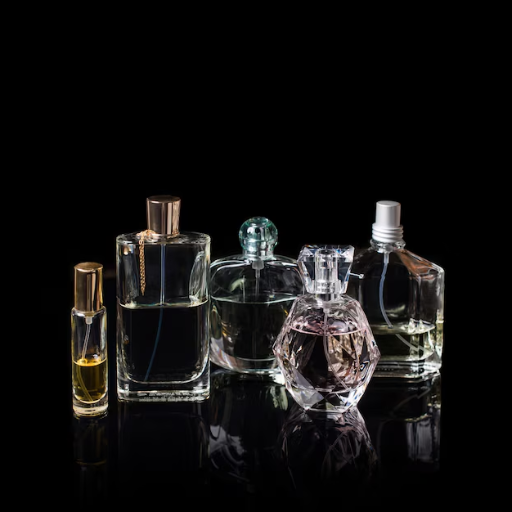
The latest trends in perfume bottle designs focus on sustainability, personalization, and innovative aesthetics. Eco-friendly materials like recycled glass and biodegradable components are becoming increasingly favored as brands prioritize environmentally conscious packaging. Customization is another significant trend, with brands offering personalized engraving, unique caps, or refillable bottle options to enhance consumer engagement. Additionally, designers are experimenting with bold, unconventional shapes and intricate details to create visually striking bottles that serve as both functional containers and statement pieces. Minimalist designs with clean lines and modern finishes remain popular, driven by the demand for contemporary elegance. These trends reflect a blend of functionality, individuality, and sustainable innovation in the perfume packaging industry.
The Rise of Vintage Refillable Perfume Bottles
Vintage refillable perfume bottles are experiencing a notable resurgence as consumers increasingly prioritize sustainability, luxury, and personalization. These bottles offer an eco-conscious alternative to single-use packaging by reducing waste through reusability. Crafted with meticulous attention to detail, vintage-inspired designs often feature ornate glasswork, intricate metal accents, and timeless aesthetics that appeal to collectors and eco-minded individuals alike.
The revival aligns with growing environmental awareness in the fragrance industry, where brands are revisiting historical craftsmanship to meet modern tastes. Refillable bottles reduce reliance on plastic, promote circular economy practices, and often utilize durable, high-quality materials that extend their lifespan. Furthermore, many consumers value the ability to refill their signature fragrances, enhancing both cost-efficiency and emotional attachment to a product.
Leading perfume houses are integrating refill stations and offering refillable cartridges for popular scents, blending heritage with practical innovation. This trend exemplifies a broader industry shift toward combining luxury with environmental responsibility while engaging consumers who seek both style and substance in their fragrance purchases.
Innovations in Spray Atomizer Technology
Modern advancements in spray atomizer technology are addressing both performance efficiency and environmental impact. Enhanced spray mechanisms now employ micro-precision nozzles that produce a finer mist, ensuring uniform fragrance dispersion while reducing product waste. Innovations such as dual-pressure systems enable improved atomization with minimal energy input, enhancing the spray consistency and coverage area.
Technical parameters of emerging atomizer designs include nozzle diameter optimization, often ranging between 0.15 mm to 0.30 mm, to achieve a fine mist density. Flow rates are calibrated meticulously, typically between 0.02 mL/s to 0.05 mL/s, to balance fragrance output without overwhelming the user. Additionally, standardized spray angles, generally set between 45° and 60°, ensure even distribution for an optimal user experience. These improvements not only cater to luxury expectations but also reflect a focus on sustainability through reduced resource wastage and the incorporation of recyclable materials in atomizer components.
The Shift Towards Eco-Friendly Packaging in Perfume Design
Eco-friendly packaging in perfume design has become increasingly significant as brands aim to minimize their environmental impact. Key advancements include the use of biodegradable materials, such as plant-based plastics and paperboard made from sustainably sourced fibers. Additionally, many brands are adopting refillable container systems, reducing single-use waste and encouraging long-term consumer loyalty. Glass bottles, a staple in perfume packaging, are now often produced with higher levels of recycled content, minimizing raw material extraction and energy consumption. Furthermore, innovations in lightweight packaging design not only reduce transportation emissions but also alleviate the overall carbon footprint of the product. By prioritizing recyclable, reusable, and compostable packaging options, the perfume industry is aligning with growing consumer demand for sustainable luxury products.
How to Start a Collection of Beautiful Perfume Bottles?
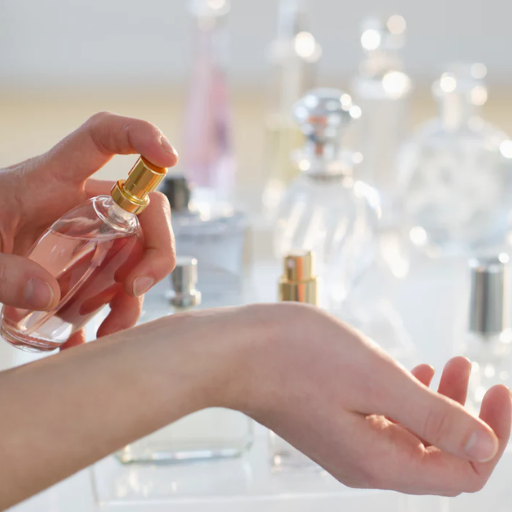
To begin your collection of beautiful perfume bottles, start by researching various styles, designs, and historical periods that appeal to you. Focus on collecting bottles with unique shapes, intricate details, or iconic branding. Visit antique shops, online marketplaces, and auctions to find rare or vintage pieces. Establish a clear theme for your collection, such as a specific era, brand, or artistic style, to give your collection a cohesive direction. Proper storage and display are crucial to preserving the bottles; consider using a glass cabinet or shelving with controlled lighting to protect them from dust and sunlight. Lastly, document the history and significance of each bottle in your collection to add both value and a deeper personal connection to your items.
Identifying Unique Perfume Bottles for Collectors
When identifying unique perfume bottles for my collection, I focus on several key factors. First, I look for limited edition or discontinued designs, as these are typically rarer and more valuable. I also pay close attention to the craftsmanship and materials used, such as hand-blown glass or intricate embellishments that set certain bottles apart. Researching the history behind a bottle—such as its designer, brand, or era—helps me determine whether it holds historical or artistic significance. Lastly, I rely on online marketplaces, auctions, and specialty shops to discover uncommon finds that aren’t readily available in standard retail settings.
Displaying Your Collection: A Guide to Decorative Bottles
When it comes to displaying my collection of decorative bottles, I focus on creating balance and visual appeal. I start by arranging bottles of varying heights and shapes together to add dimension and interest. Using well-lit shelves or cabinets with glass doors helps highlight their intricate details while protecting them from dust and handling. Additionally, I sometimes incorporate complementary elements, such as small plants, books, or fabrics, to enhance the overall aesthetic without distracting from the bottles themselves. Grouping by color or theme is another effective approach to showcase the variety within my collection while maintaining an organized appearance.
How Does Perfume Packaging Influence Consumer Choices?
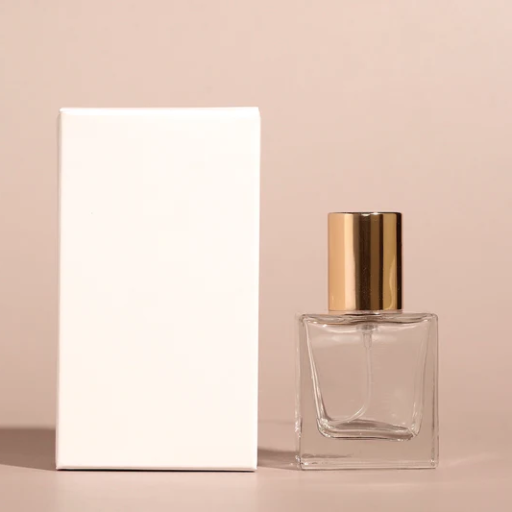
Perfume packaging plays a critical role in influencing consumer choices by serving as both a functional and aesthetic element. The design and materials of the packaging create a first impression, often evoking emotions and signaling the brand’s identity. Luxury materials such as glass, metal, or embossed details can communicate sophistication and quality, while bold colors and unique shapes may appeal to consumers seeking individuality. Additionally, the visibility of the bottle, through transparent or partially transparent designs, allows buyers to connect with the product visually, enhancing its allure. Packaging also serves as a practical feature, ensuring the product’s preservation and usability, which underscores both reliability and convenience for the consumer.
The Psychology Behind Visually Appealing Perfume Bottles
The design of a perfume bottle significantly affects a consumer’s purchasing decision by leveraging psychological principles of aesthetics, branding, and emotional appeal. Shapes and colors are powerful communicators; for instance, rounded or soft shapes suggest elegance and femininity, while angular shapes evoke strength and sophistication. Similarly, color psychology plays a vital role—gold and black symbolize luxury and exclusivity, while pastel tones convey softness and romance.
Additionally, tactile elements influence perception. A heavy, well-crafted bottle signals quality and suggests a premium product, whereas innovative textures or engraving create a sensory experience, aligning with the brand’s narrative. Transparency in the bottle design not only allows customers to see the fragrance but also fosters trust by emphasizing authenticity. Ultimately, visually appealing packaging connects with the consumer on an emotional and subconscious level, making the product more memorable and desirable.
The Impact of Brand Identity on Perfume Glass Bottle Design
Brand identity plays a critical role in influencing every aspect of perfume glass bottle design, including its shape, material, color, and finish. Successful perfume packaging reflects the essence of a brand, ensuring that it communicates the brand’s values, target audience, and market positioning with precision.
Shape and Form
The geometry or silhouette of a perfume bottle often embodies the brand’s story. For instance, luxury brands may opt for sleek, minimalistic forms, while artisanal or niche brands might feature intricate, unconventional shapes. The technical design process requires precise volumetric capacity calculations, typically ranging from 30 mL to 100 mL, to align with industry standards and consumer preferences.
Material Selection
The material composition of perfume bottles is selected based on aesthetic, functional, and environmental factors. High-grade glass, such as Type III soda-lime glass, ensures durability, clarity, and a premium visual appeal. Recycled and lightweight glass options are becoming increasingly popular to meet sustainable branding objectives.
Color and Coating
Color psychology plays a central role in design, with darker shades like black or navy symbolizing sophistication, while pastel hues suggest elegance and softness. Advanced techniques, such as UV coating or metallization, are employed not only to achieve color fidelity but also to protect the perfume from degradation caused by light exposure.
Closure Mechanisms
The cap design and mechanism must merge practicality and branding. Magnetic or screw caps, typically made from zamak (zinc alloy) or acrylic, are commonly used for their durability and luxury feel. Tolerances for closures are often engineered to ±0.05 mm to ensure an airtight seal.
Innovative Features
Modern bottle designs often incorporate engraving, embossing, or custom etching to enhance tactile experience and maintain brand uniqueness. QR codes or NFC-enabled tags can also be embedded for interactive customer engagement, catering to tech-savvy demographics.
By aligning every design element with the brand’s core identity and ensuring precise technical execution, perfume bottle designs transcend functionality to become a pivotal extension of the brand narrative. This synthesis of creativity and engineering fosters a lasting impression and enhances consumer loyalty.
Reference Sources
-
Perfume Bottle Design: The Crucial Element in Branding Fragrances – Discusses the intricate process of creating a perfume bottle design and its role in branding.
-
The Process of Designing a Custom Perfume Bottle – Explains the step-by-step process of designing a custom perfume bottle, from concept to creation.
-
The History and Evolution of Perfume Bottles – Provides insights into the historical development and creative evolution of perfume bottles.
-
Perfume Bottle | Design, Fragrance, Decoration – Offers a historical overview of perfume bottles, including their origins and cultural significance.
-
A Century of Perfume Bottle Evolution – Explores the evolution of perfume bottle design over the past century, highlighting key styles and trends.
Frequently Asked Questions (FAQs)
Q: What makes a glass perfume bottle unique in the world of fragrance design?
A: A glass perfume bottle stands out due to its ability to beautifully display the perfume’s color while offering a tactile and visual experience. The transparency and elegance of glass allow designers to create unique bottle shapes that enhance the allure of the perfume it holds.
Q: How do luxurious perfume bottles enhance the value of a fragrance?
A: Luxurious perfume bottles contribute to the fragrance’s value by providing an unforgettable visual and tactile experience. High-end materials like crystal and intricate designs, such as jeweled embellishments or hand-blown elements, make these bottles cherished items beyond their scent.
Q: Can glass spray bottles be customized for a personalized touch?
A: Yes, glass spray bottles can be customized through techniques such as printing, hot stamping, or the addition of a logo. This personalization allows brands and individuals to create a bottle design that reflects their unique identity and style.
Q: What are the benefits of using refillable spray bottles for perfumes?
A: Refillable spray bottles are eco-friendly and cost-effective, allowing users to replenish their favorite scents without purchasing a new bottle each time. This not only reduces waste but also offers the convenience of maintaining a favored fragrance in a preferred design.
Q: How does the design team contribute to creating new designs for perfume bottles?
A: The design team plays a crucial role in developing new designs by researching trends, experimenting with shapes, materials, and colors, and collaborating with artisans to produce innovative and iconic bottles that resonate with consumers.
Q: What is the significance of using crystal bottles in perfume design?
A: Crystal bottles add a touch of luxury and sophistication to perfume design. Their clarity and weight enhance the perception of quality, while their ability to refract light creates a captivating visual effect that enhances the overall appeal of the fragrance.
Q: Why are empty glass bottles popular in the perfume industry?
A: Empty glass bottles are popular due to their versatility and recyclability. They provide a clean slate for creating customized perfumes, allowing for artistic expression in design and packaging, while being environmentally friendly options for consumers and brands.
Q: How are geometric designs incorporated into modern perfume bottles?
A: Geometric designs in modern perfume bottles are incorporated through the use of sharp angles, clean lines, and symmetrical shapes. These elements create a contemporary aesthetic that appeals to modern consumers seeking minimalist and artistic presentations of their fragrances.
Q: What role does the sprayer play in the functionality of a perfume bottle?
A: The sprayer is essential for dispensing the perfume in a fine mist, ensuring even application and optimal use of the fragrance. A well-designed sprayer enhances the user experience by providing a smooth, consistent spray that highlights the scent’s characteristics.

